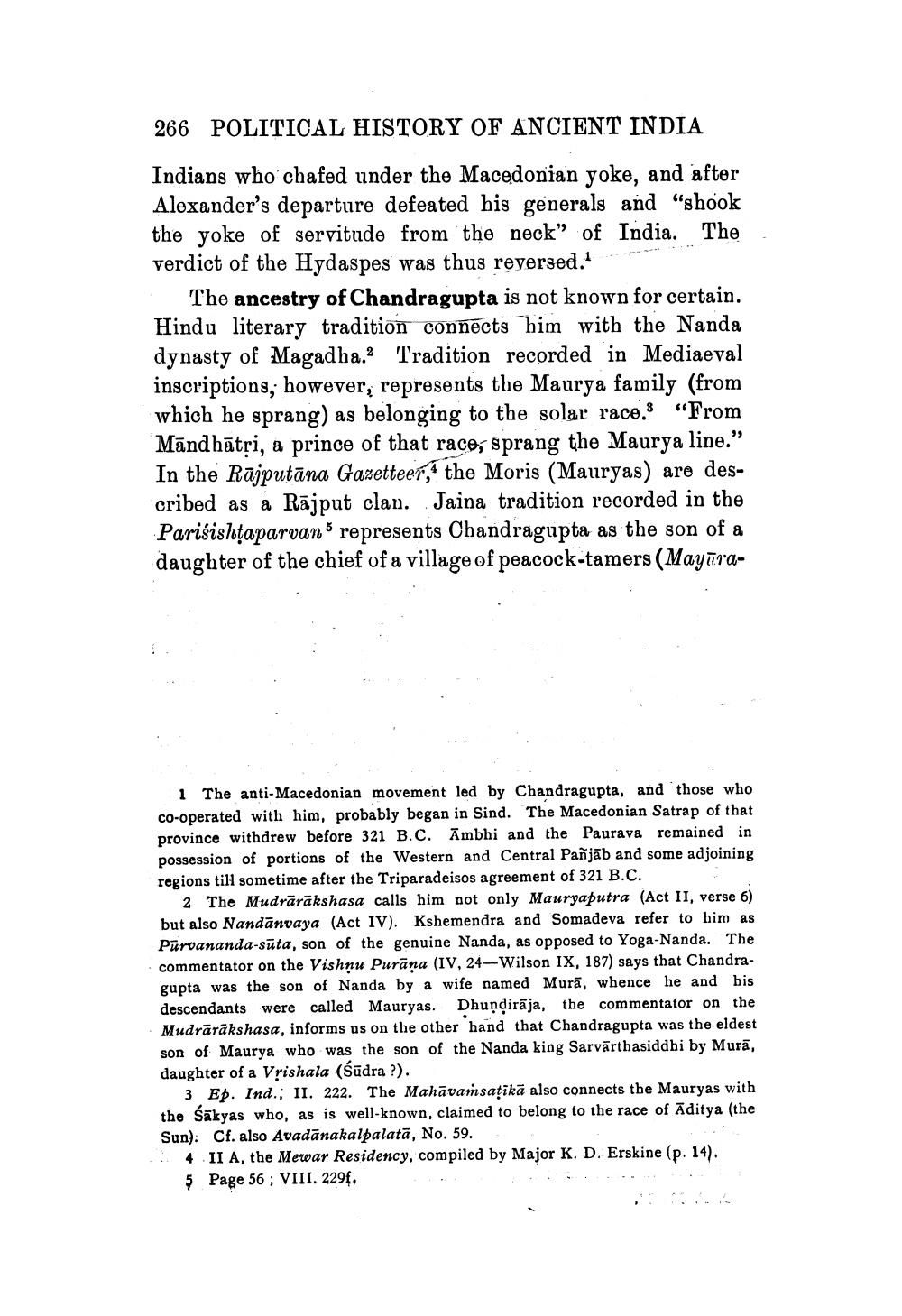________________
266 POLITICAL HISTORY OF ANCIENT INDIA
Indians who'chafed under the Macedonian yoke, and after Alexander's departure defeated his generals and "shook the yoke of servitude from the neck" of India. The verdict of the Hydaspes was thus reversed.**
The ancestry of Chandragupta is not known for certain. Hindu literary tradition connects him with the Nanda dynasty of Magadha.? Tradition recorded in Mediaeval inscriptions, however, represents the Maurya family (from which he sprang) as belonging to the solar race. "From Māndhātri, a prince of that race, sprang the Maurya line." In the Rājputāna Gazetteer," the Moris (Mauryas) are described as a Rājput clan. Jaina tradition recorded in the Parisishţaparvans represents Chandragupta as the son of a daughter of the chief of a village of peacock-tamers (Mayūra
1 The anti-Macedonian movement led by Chandragupta, and those who co-operated with him, probably began in Sind. The Macedonian Satrap of that province withdrew before 321 B.C. Ambhi and the Paurava remained in possession of portions of the Western and Central Pañjāb and some adjoining regions till sometime after the Triparadeisos agreement of 321 B.C.
2 The Mudrārākshasa calls him not only Mauryaputra (Act II, verse 6) but also Nandānvaya (Act IV). Kshemendra and Somadeva refer to him as Purvananda-sūta, son of the genuine Nanda, as opposed to Yoga-Nanda. The commentator on the Vishnu Purāna (IV, 24-Wilson IX, 187) says that Chandragupta was the son of Nanda by a wife named Murā, whence he and his descendants were called Mauryas. Dhundirāja, the commentator on the Mudrārākshasa, informs us on the other hand that Chandragupta was the eldest son of Maurya who was the son of the Nanda king Sarvārthasiddhi by Murā, daughter of a Vrishala (Śūdra ?).
3 Ep. Ind.; II. 222. The Mahāvansaţikā also connects the Mauryas with the sākyas who, as is well-known, claimed to belong to the race of Aditya (the Sun): Cf. also Avadānakalpalatā, No. 59.
4 II A, the Mewar Residency, compiled by Major K. D. Erskine (p. 14). 5 Page 56 ; VIII. 229f.




